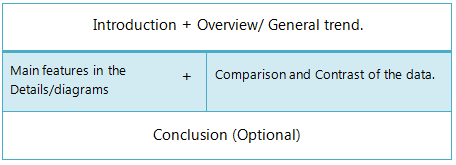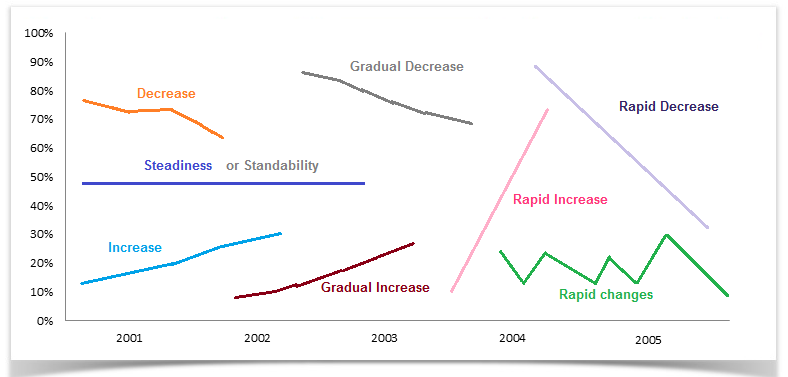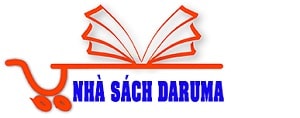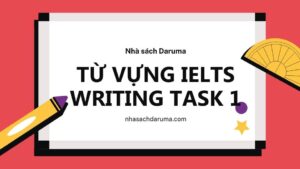Từ vựng ielts writing task 1
Từ vựng ielts writing task 1 là bài viết tổng hợp những từ vựng ielts thường dùng trong ielts task 1. Học hết những từ này Bạn có thể đạt được điểm cao, có nhiều từ vựng hoàn thành task 1 nhanh chóng mà vẫn đạt được yêu cầu của đề bài.
Xem thêm: Model essays for ielts writing
Tóm tắt nội dung
- 1 Từ vựng ielts writing task 1
- 1.1 Vocabulary for the Introduction Part:
- 1.2 General Statement Part:
- 1.3 Vocabulary for the General Trend Part:
- 1.4 The structure of the IELTS Academic Writing Task 1 (Report Writing):
- 1.5 Introduction:
- 1.6 Reporting Details:
- 1.7 Conclusion:
- 1.8 Vocabulary to Start the Report Body:
- 1.9 Vocabulary to show the changes:
- 1.10 Vocabulary to represent changes in graphs:
- 1.11 Types of Changes/ Differences and Vocabulary to present them:
- 1.12 Dates, Months & Years related vocabulary and grammar:
- 1.13 Percentage, Portion and Numbers:
- 1.14 Words/ Phrases of Approximation – Vocabulary:
- 1.15 What criteria would a band 9 graph response satisfy?
Từ vựng ielts writing task 1
Vocabulary for the Introduction Part:
| Starting | Presentation Type | Verb | Description |
| The/ the given / the supplied / the presented / the shown / the provided | diagram / table / figure / illustration / graph / chart / flow chart / picture/ presentation/ pie chart / bar graph/ column graph / line graph / table data/ data / information / pictorial/ process diagram/ map/ pie chart and table/ bar graph and pie chart … | shows / represents / depicts / enumerates / illustrates / presents/ gives / provides / delineates/ outlines/ describes / delineates/ expresses/ denotes/ compares/ shows contrast / indicates / figures / gives data on / gives information on/ presents information about/ shows data about/ demonstrates/ sketch out/ summarises… | the comparison of… the differences… the changes… the number of… information on… data on… the proportion of… the amount of… information on… data about… comparative data… the trend of… the percentages of… the ratio of… how the… |
Example :
1. The diagram shows employment rates among adults in four European countries from 1925 to 1985.
2. The given pie charts represent the proportion of male and female employees in 6 broad categories, dividing into manual and non-manual occupations in Australia, between 2010 and 2015.
3. The chart gives information about consumer expenditures on six products in four countries namely Germany, Italy, Britain and France.
4. The supplied bar graph compares the number of male and female graduates in three developing countries while the table data presents the overall literacy rate in these countries.
5. The bar graph and the table data depict the water consumption in different sectors in five regions.
6. The bar graph enumerates the money spent on different research projects while the column graph demonstrates the fund sources over a decade, commencing from 1981.
7. The line graph delineates the proportion of male and female employees in three different sectors in Australia between 2010 and 2015.
Note that, some teachers prefer “The line graph demonstrates…” format instead of “The given line graph demonstrates…”. However, if you write “The given/ provided/ presented….” it would be correct as well.
Tips:
1. For a single graph use ‘s’ after the verb, like – gives data on, shows/ presents etc. However, if there are multiple graphs, DO NOT use ‘s’ after the verb.
2. If there are multiple graphs and each one presents a different type of data, you can write which graph presents what type of data and use ‘while’ to show a connection. For example – ‘The given bar graph shows the amount spent on fast food items in 2009 in the UK while the pie chart presents a comparison of people’s ages who spent more on fast food.
3. Your introduction should be quite impressive as it makes the first impression on the examiner. It either makes or breaks your overall score.
4. For multiple graphs and/ or table(s), you can write what they present in combination instead of saying which each graph depicts. For example, “The two pie charts and the column graph in combination depicts a picture of the crime in Australia from 2005 to 2015 and the percentages of young offenders during this period.”
Caution:
Never copy word for word from the question. If you do, you would be penalized. always paraphrase the introduction in your own words.
General Statement Part:
The General statement is the first sentence (or two) you write in your reporting. It should always deal with:
What + Where + When.
Example: The diagram presents information on the percentages of teachers who have expressed their views about the different problems they face when dealing with children in three Australian schools from 2001 to 2005.
What = the percentages of teachers…
Where = three Australian schools…
When = from 2001 to 2005…
A good General statement should always have these parts.
Vocabulary for the General Trend Part:
In general, In common, Generally speaking, Overall, It is obvious, As it is observed, As a general trend, As can be seen, As an overall trend/ As overall trend, As it is presented, It can be clearly seen that, At the first glance, it is clear, At the onset, it is clear that, A glance at the graphs reveals that…
Example:
1. In general, the employment opportunities increased till 1970 and then declined throughout the next decade.
2. As it is observed, the figures for imprisonment in the five mentioned countries show no overall pattern, rather shows the considerable fluctuations from country to country.
3. Generally speaking, citizens in the USA had a far better life standard than that of the remaining countries.
4. As can be seen, the highest number of passengers used the London Underground station at 8:00 in the morning and at 6:00 in the evening.
4. Generally speaking, more men were engaged in managerial positions in 1987 than that of women in New York this year.
5. As an overall trend, the number of crimes reported increased fairly rapidly until the mid-seventies, remained constant for five years and finally, dropped to 20 cases a week after 1982.
6. At a first glance, it is clear that more percentages of native university pupils violated regulations and rules than the foreign students did during this period.
7. At the onset, it is clear that drinking in public and drink-driving were the most common reasons for US citizens to be arrested in 2014.
8. Overall, the leisure hours enjoyed by males, regardless of their employment status, were much higher than that of women.
The structure of the IELTS Academic Writing Task 1 (Report Writing):
Introduction:
Introduction (never copy word for word from the question) + Overview/ General trend (what the diagrams indicate at a first glance).
Reporting Details:
Main features in the Details
+ Comparison and Contrast of the data. (Do not give all the figures.)
+ Most striking features of the graph.
Conclusion:
Conclusion (General statement + Implications, significant comments)
[The conclusion part is optional.]

Tips:
1. Write the introduction and General trend in the same paragraph. Some students prefer to write the ‘General Trend’ in a separate paragraph and many teachers suggest both to be written in a single paragraph. Unless you have a really good reason to write the general trend in the second paragraph, try to write them both in the first paragraph. However, this is just a suggestion, not a requirement.
2. Your ‘Introduction (general statement + overall trend/ general trend) should have 75 – 80 words.
3. DO NOT give numbers, percentages or quantity in your general trend. Rather give the most striking feature of the graph that could be easily understood at a glance. Thus it is suggested to AVOID –
“A glance at the graphs reveals that 70% of the male were employed in 2001 while 40 thousand women in this year had jobs.”
And use a format /comparison like the following:
“A glance at the graphs reveals that more men were employed than their female counterpart in 2001 and almost two-third of females were jobless in the same year. “
Vocabulary to Start the Report Body:
Just after you finish writing your ‘Introduction’ (i.e. General Statement + General overview/ trend), you are expected to start a new paragraph to describe the main features of the diagrams. This second paragraph is called the ‘Body Paragraph / Report Body”. You can have a single body paragraph/ report body or up to 3, (not more than 3 in any case) depending on the number of graphs provided in the question and the type of these graphs. There are certain phrases you can use to start your body paragraph and the following is a list of such phrases —
1. As it is presented in the diagram(s)/ graph(s)/ pie chart(s)/ table…
2. As (it is) shown in the illustration…
3. As can be seen in the…
4. As the diagrams suggest…
5. According to the…
6. Categorically speaking…
7. Getting back to the details…
8. Now, turning to the details…
9. The table data clearly shows that…
10. The diagram reveals that…
11. The data suggest that…
12. The graph gives the figure…
13. It is interesting to note that…
14. It is apparently seen that…
15. It is conspicuous that…
16. It is explicitly observed that…
17. It is obvious…
18. It is clear from the data…
19. It is worth noticing that…
20. It is crystal clear/ lucid that…
21. It can be clearly observed that…
22. It could be plainly viewed that…
23. It could be noticed that…
24. We can see that…
Vocabulary to show the changes:
| Trends | Verb form | Noun Form |
| Increase | rise / increase / go up / uplift / rocket(ed) / climb / upsurge / soar/ shot up/ improve/ jump/ leap/ move upward/ skyrocket/ soar/ surge. | a rise / an increase / an upward trend / a growth / a leap / a jump / an improvement/ a climb. |
| Decrease | fall / decrease / decline / plummet / plunge / drop / reduce / collapse / deterioriate/ dip / dive / go down / take a nosedive / slum / slide / go into free-fall. | a fall / a decrease / a reduction / a downward trends /a downward tendency / a decline/ a drop / a slide / a collapse / a downfall. |
| Steadiness | unchanged / level out / remain constant / remain steady / plateau / remain the same / remain stable / remain static | a steadiness/ a plateau / a stability/ a static |
| Gradual increase |
———— |
an upward trend / an upward tendency / a ceiling trend |
| Gradual decrease |
———— |
a downward trend / a downward tendency / a descending trend |
| Standability/ Flat | level(ed) off / remain(ed) constant / remain(ed) unchanged / remain(ed) stable / prevail(ed) consistency / plateaued / reach(ed) a plateau / stay(ed) uniform /immutable / level(ed) out/ stabilise/ remain(ed) the same. |
No change, a flat, a plateau. |
Examples:
1. The overall sale of the company increased by 20% at the end of the year.
2. The expenditure of the office remained constant for the last 6 months but the profit rose by almost 25%.
3. There was a 15% drop in the ratio of student enrollment at this University.
4. The population of the country remained almost the same as it was 2 years ago.
5. The population of these two cities increase significantly in the last two decades and it is expected that it will remain stable during the next 5 years.

Tips:
1. Use ‘improve’ / ‘an improvement’ to describe a situation like economic condition or employment status. To denote numbers use other verbs/nouns like increase.
2. Do not use the same word/ phrase over and over again. In fact, you should not use a noun or verb form to describe a trend/change more than twice; once is better!
3. To achieve a high band score you need to use a variety of vocabulary as well as sentence formations.
Vocabulary to represent changes in graphs:
| Type of Change | Adverb form | Adjective form |
| Rapid change | dramatically / rapidly / sharply / quickly / hurriedly / speedily / swiftly / significantly/ considerably / substantioally / noticably. | dramatic / rapid / sharp / quick / hurried / speedy / swift / significant / considerable / substantial / noticable. |
| Moderate change | moderately / gradually / progressively / sequentially. | moderate / gradual / progressive / sequential. |
| Steady change | steadily/ ceaselessly. | steady/ ceaseless. |
| Slight change | slightly / slowly / mildly / tediously. | slight / slow / mild / tedious. |
Example:
1. The economic inflation of the country increased sharply by 20% in 2008.
2. There was a sharp drop in industrial production in the year 2009.
3. The demand for new houses dramatically increased in 2002.
4. The population of the country dramatically increased in the last decade.
5. The price of the oil moderately increased during the last quarter but as a consequence, the price of daily necessity rapidly went up.
 Vocabulary to represent frequent changes in graphs:
Vocabulary to represent frequent changes in graphs:
| Type of Change | Verb form | Noun form |
| Rapid ups and downs | wave / fluctuate / oscillate / vacillate / palpitate | waves / fluctuations / oscillations / vacillations / palpitations |
Example:
1. The price of the goods fluctuated during the first three months of 2017.
2. The graph shows the oscillations of the price from 1998 to 2002.
3. The passenger number in this station oscillates throughout the day and in the early morning and evening, it remains busy.
4. The changes in car production in Japan shows a palpitation for the second quarter of the year.
5. The number of students in debate clubs fluctuated in different months of the year and rapid ups and downs could be observed in the last three months of this year.
Tips:
1. 4. DO NOT try to present every single data presented in a graph. Rather pick 5-7 most significant and important trends/ changes and show their comparisons and contrasts.
2. The question asks you to write a report and summarise the data presented in graphs(s). This is why you need to show the comparisons, contrasts, show the highest and lowest points and most striking features in your answer, not every piece of data presented in the diagram(s).
Types of Changes/ Differences and Vocabulary to present them:
Great change / Huge difference:
Adjectives Adverbs
Overwhelming Overwhelmingly
Substantial Substantially
Enormous Enormously
Big change / Big difference:
Adjectives Adverbs
Significant Significantly
Considerable Considerably
Medium change / Moderate difference:
Adjectives Adverbs
Somewhat Somewhat
Moderate Moderately
Minor change / Small difference:
Adjectives Adverbs
Fractional Fractionally
Marginal Marginally
Slight Slightly
» From 1990 to 2000, Commencing from 1980, Between 1995 and 2005, After 2012.
» By 1995, In 1998, In February, Over the period, During the period, During 2011.
» In the first half of the year, For the first quarter, The last quarter of the year, During the first decade.
» In the 80s, In the 1980s, During the next 6 months, In the mid-70s, Next 10 years, Previous year, Next year, Between 1980 – 1990.
» Within a time span of ten years, within five years.
» Next month, Next quarter, Next year, Previous month, Previous year.
» Since, Then, From.
Percentage, Portion and Numbers:
Percentages:
10% increase, 25 percent decrease, increased by 15%, dropped by 10 per cent, fall at 50%, reached to 75%, tripled, doubled, one-fourth, three-quarters, half, double fold, treble, 5 times higher, 3 timers lower, declined to about 49%, stood exactly at 43%.
Fractions:
4% = A tiny fraction.
24% = Almost a quarter.
25% Exactly a quarter.
26% = Roughly one quarter.
32% Nearly one-third, nearly a third.
49% = Around a half, just under a half.
50% Exactly a half.
51% = Just over a half.
73% = Nearly three quarters.
77% = Approximately three quarter, more than three-quarter.
79% = Well over three quarters.
Proportions:
2% = A tiny portion, a very small proportion.
4% = An insignificant minority, an insignificant proportion.
16% = A small minority, a small portion.
70% = A large proportion.
72% = A significant majority, A significant proportion.89% = A very large proportion.
89% = A very large proportion.
Words/ Phrases of Approximation – Vocabulary:
» Approximately
» Nearly
» Roughly
» Almost
» About
» Around
» More or less
» Just over
» Just under
» Just around
» Just about
» Just below
» A little more than
» A little less than.
What criteria would a band 9 graph response satisfy?
Task Achievement:
A) Fully satisfies all the requirements of the task.
B) Clearly presents a fully developed response.
What will be assessed by the examiner?
a) How appropriately, accurately and relevantly you fulfil your task requirements.
b) How accurately you write your report and how appropriately you present the data (compare/ contrast/ show the most striking trends/ features/ data.)
Coherence and Cohesion:
A) Uses cohesion in such a way that it attracts no attention.
B) Skillfully manages paragraphing.
What will be assessed by the examiner?
a) No misinterpretation and presentation of data and trend.
b) How well you organise your paragraphs.
c) Overall clarity and fluency of your report and message.
d) How well you have organised and liked the information, data and ideas in your writing.
e) Logical sequencing and appropriate use of linking devices between and within your sentences.
Tips:
1. Do not incorporate more than 3-4 paragraphs.
2. Do not use a single paragraph to describe everything.
3. The conclusion part is optional. If you think that you have already written more than 170 words and have nothing to say, you can skip the conclusion.
Lexical Resource:
A) Uses a wide range of vocabulary with very natural and sophisticated control of lexical features.
B) Rare minor errors occur only as ‘slips’.
What will be assessed by the examiner?
a) The range of vocabulary you have used in your writing.
b) How accurately and appropriately you have used words/ phrases while presenting the graph(s) as a report.
Tips: Do NOT use words/ phrases that are already given in the question. Do so only if there is no alternative word(s)/ phrase(s) to convey the same meaning/idea.

Grammatical Range and Accuracy:
A) Uses a wide range of structures with full flexibility and accuracy.
B) Rare minor errors occur only as ‘slips’.
Tips:
Do not use the same sentence structure and data comparison/ contrasting style over and over again. Bring a variety in your writing to show that you can formulate different sentence structures without making any grammatical mistakes.

